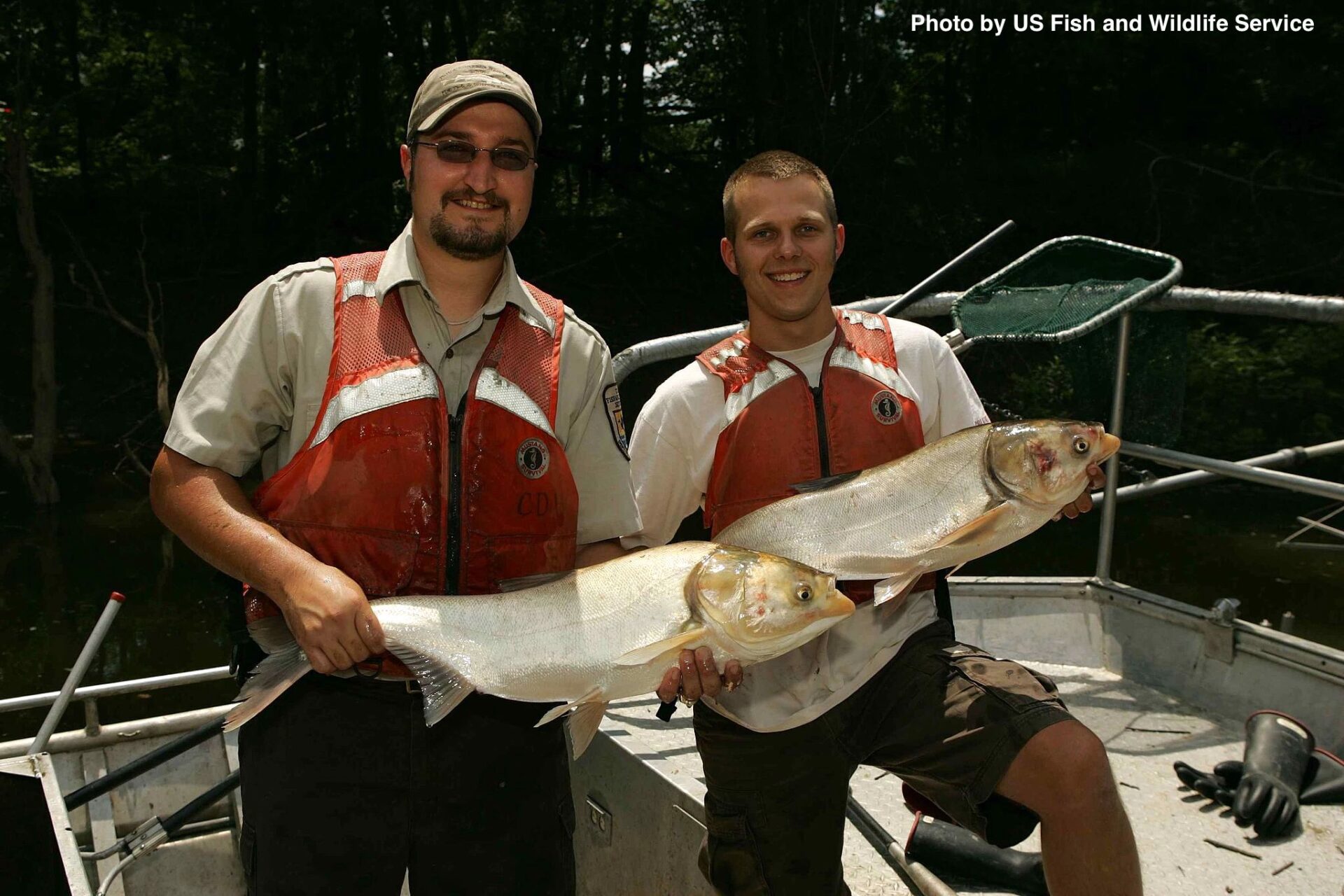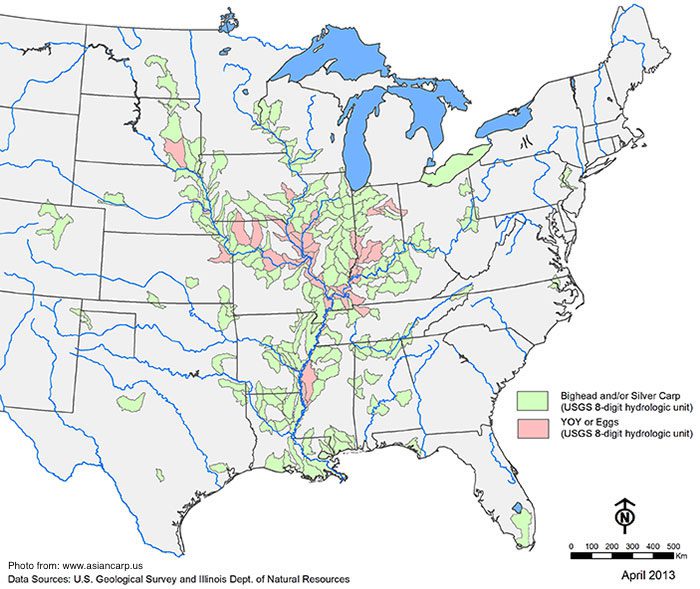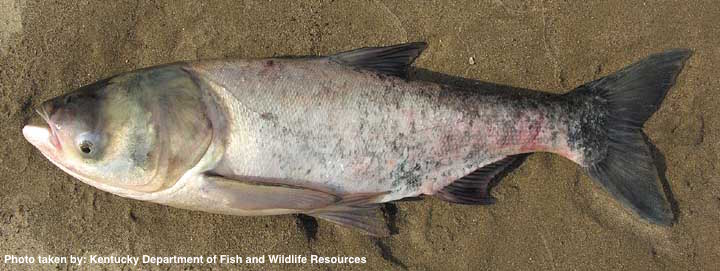Monday February 20, 2017
 Carp really captured readers’ attention in our most-read story of 2016, so we wanted to further investigate carp invasions across the United States. While common carp have quietly taken over much of the world, a related group of species known as Asian carp have been stirring up some major concern in the Midwestern United States in recent years. While the group of fish known collectively as Asian carp features seven species introduced to the United States, the two of utmost concern are bighead (Hypophthalmichthys nobilis) and silver carp (Hypothalmichthys molitrix). Bighead and silver carp were originally introduced to the Midwest in the 1970s as a form of biological control for problematic algal blooms and invasive aquatic vegetation in confined systems like aquaculture facilities, farm ponds, or waste water treatment facilities. However, flooding events helped the fish find their way into open water, and bighead carp can now be found in 23 states, while silver carp can be found in 17 states.
Carp really captured readers’ attention in our most-read story of 2016, so we wanted to further investigate carp invasions across the United States. While common carp have quietly taken over much of the world, a related group of species known as Asian carp have been stirring up some major concern in the Midwestern United States in recent years. While the group of fish known collectively as Asian carp features seven species introduced to the United States, the two of utmost concern are bighead (Hypophthalmichthys nobilis) and silver carp (Hypothalmichthys molitrix). Bighead and silver carp were originally introduced to the Midwest in the 1970s as a form of biological control for problematic algal blooms and invasive aquatic vegetation in confined systems like aquaculture facilities, farm ponds, or waste water treatment facilities. However, flooding events helped the fish find their way into open water, and bighead carp can now be found in 23 states, while silver carp can be found in 17 states.
Much of the concern regarding bighead and silver carp comes from their prolific takeover of the Mississippi River and its tributaries that connect to the Great Lakes Basin. Since escaping into the wild, bighead and silver carp have overwhelmed the Mississippi and Illinois River systems and now represent more than 95% of the biomass in some locations. Between 1994 and 1997, commercial catch of bighead carp increased from 5.5 tons to 55 tons in the Mississippi, and in 2011 the Illinois River fishery was regularly catching as much as 25,000 pounds of bighead and silver carp per day. Silver carp also pose a safety hazard for boaters (and fodder for many internet videos) with their propensity to leap out of the water when startled. These species are voracious eaters of plankton, preferring phytoplankton but able to transition to zooplankton if needed. Asian carp can consume up to 20% of their body weight per day, and their lack of a true stomach requires them to constantly feed – meaning these fish can drastically upend the food web in newly invaded areas.
With the wide array of connections constructed between waterways and the ever-present possibility of floods, there are multiple potential entry points for Asian carp to make their way into the Great Lakes. As a result, the US Army Corps of Engineers (USACOE) has spent nearly $200 million (as of 2013) investigating several different methods to ward off this threat to the $7 billion Great Lakes fishing industry. Several deterrence technologies have been tested at various locations, including three versions of an electrical barrier as well as sound or bubble screens and strobe lights. Carp are known to be sensitive to sound, and the combination of acoustics, bubble screens, and strobe light technologies tested proved to be 60-99% effective at deterring all sizes of bigheaded carp. Pulsing electrical barriers immobilized bigheaded carp larger than 5 inches in length, but smaller carp were still able to pass through the electrified area at times. With modifications to the electrical field settings, it could be possible to immobilize all life stages of carp, but this would pose a significant threat to public safety. Recent studies also suggest carbon dioxide can serve as an Asian Carp deterrent.
To illustrate the danger these fish pose, the Binational Ecological Risk Assessment of Bigheaded Carps suggests that as few as 10 individuals of each sex would have the potential to create a viable population within the Great Lakes. In 2011, the USACOE elected to install a $10 million, 130-foot electrical barrier at the Chicago Sanitary and Ship Canal to prevent the carp from entering Lake Michigan. Recent documentation of successfully spawning grass carp (another relative of bigheaded carps) in Ohio’s Sandusky River, a tributary of Lake Erie, has led to further carp anxiety. Grass carp share many of the same characteristics and requirements for spawning as bighead and silver carp, which seems to confirm the ability of Asian Carp to spawn within areas of the Great Lakes. Considering the significant threat the fish pose to both American and Canadian interests, it’s understandable why a sizeable investment has been made to stymie the spread of these foreign invaders.
This post featured in our weekly e-newsletter, the Fish Report. You can subscribe to the Fish Report here.


